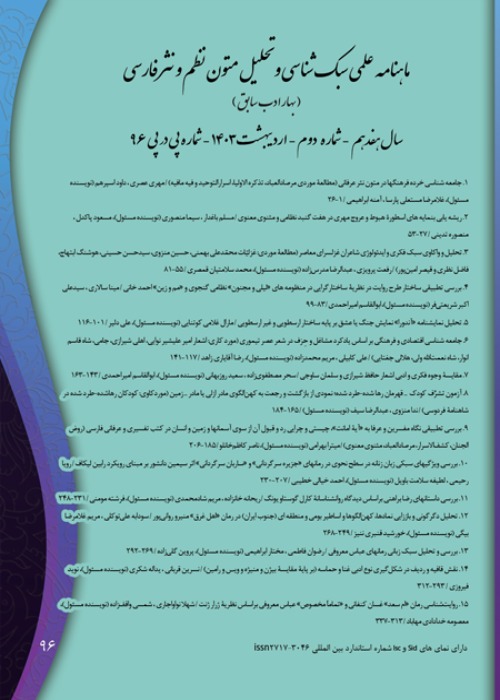Educational teachings and its techniques in "Safa 'al-Qulub" and "Nan and Halva" with a teleological approach
Educational literature is a means to provide moral and educational teachings so that happiness and happiness can be achieved by paying attention to them. For a long time, most of the Persian poems have been dependent on the most compelling moral and educational themes, which contain valuable advice. Sheikh Baha"i Nan and Halva is one of these valuable moral works written in the Safavid period. Hazin Shirvani was one of the poets of the Qajar period who composed Safa al-Qulub following Nan and halva with educational themes. This study seeks to answer the question of what ethical points these two works contain and what tricks they have used; Also, what is the similarity between these two works with the theory of teleology and Islamic ethics?
In order to achieve this goal, the author has studied the teaching teachings in both positive and negative parts through documentary, descriptive-analytical and statistical methods and based on library studies, and finally has shown the techniques used.
The achievement of the research indicates the wide reflection of educational literature and ethics in the two studied works. In total two works, 5 positive cases (contentment, truth, infallibility, patience and trust) and 16 negative cases (avoidance of forbidden property, avoidance of asceticism, avoidance of teaching for the enchantment of the common people, avoidance of worldly possessions, avoidance of nearness to the king Avoid worldly positions, abstain from linguistics, abstain from associating with unworthy people, abstain from worship for paradise, abstain from perversion, abstain from ignorance, disobedience to the soul, abstain from adultery, abstain from arrogance and abstain from hypocrisy.) Compared to the samples of the two works, 5 common cases (2 positive cases: invitation to contentment, invitation to trust and 3 negative cases: avoidance of forbidden property, invitation to silence and silence and avoidance of hypocrisy) can be seen.
The negative part of the teachings is heavier than the positive part and commands and prohibitions, questions and answers, storytelling, allegory, use of verses and hadiths and respectful speeches have been the tools used in these two works. The results presented in the moral recommendations are a reason for the alignment of both works with the theory of teleology and its adaptation to Islamic ethics.
- حق عضویت دریافتی صرف حمایت از نشریات عضو و نگهداری، تکمیل و توسعه مگیران میشود.
- پرداخت حق اشتراک و دانلود مقالات اجازه بازنشر آن در سایر رسانههای چاپی و دیجیتال را به کاربر نمیدهد.


